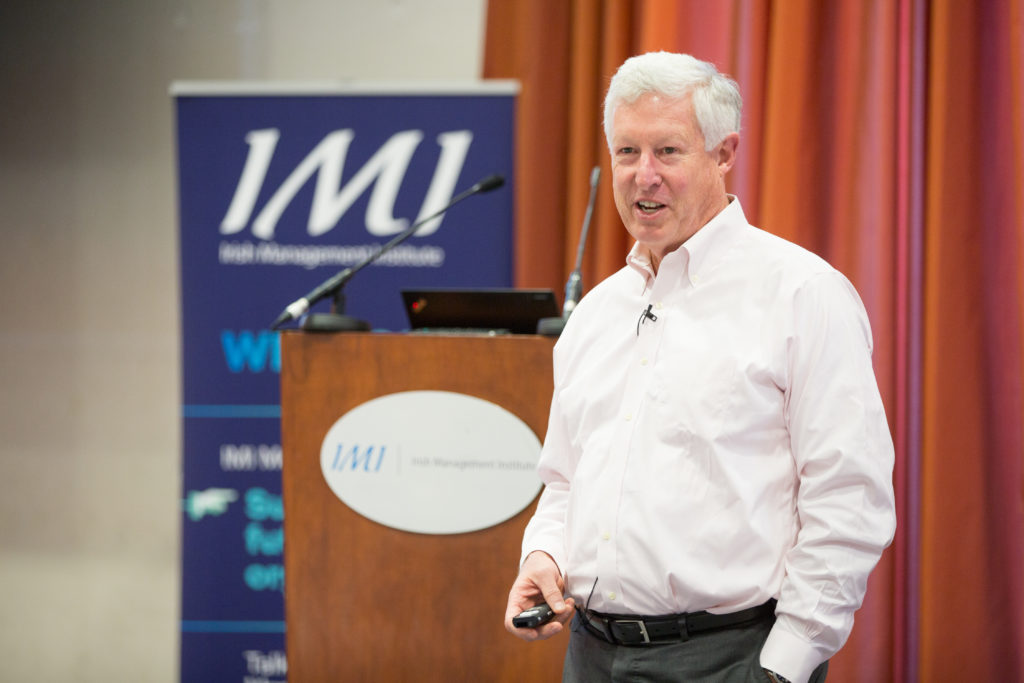Related Articles
Keeping a ‘Founder’s Mentality’
Retaining the ‘founder’s mentality’ is key for continued success in an organisation, and that it is possible to keep (or rediscover) that mindset, no matter how large and complex your organisation has become.
Small organisations aspire to grow ‘big’ someday, to become a behemoth bestriding the marketplace, their ideas shaping it to their own ends. The problem is, according to Chris Zook of Bain and Company, that when they become successful the growth paradox comes into play – growth creates complexity, and complexity kills growth.
Retaining the ‘founder’s mentality’ is key for continued success in an organisation, and that it is possible to keep (or rediscover) that mindset, no matter how large and complex your organisation has become.
Through their own research, Bain and Co. found that the organisations that were able to retain that entrepreneurial ethos account for 50% or more of the net value creation on the stock market, although only 6-7% of companies keep that entrepreneurial mindset.
Founder-led companies consistently outperform other companies in other areas too. Bain’s research shows between 1990 and 2014, companies on the S&P led by a founder outperformed their rivals by 3.1 times for total shareholder returns.
The bottom-line value is clear.

Diversification to Death
A prime reason for companies losing their founder’s mentality is a redefining of the core mission of the company. Moving away from that core mission is especially tempting over time, often due to the success that your company has experienced. Lego, one of the world’s most famous brands, have gone through a cycle of this diversification and then redefinition back to its core over the last two decades.
At the beginning of this century, Lego redefined themselves from a toy company to a ‘family brand’. This ethos led to the opening of branded theme parks, movies, clothing lines etc. These additional product lines and revenue streams beyond their core mission began to reduce the cash flow in the company – indeed, at one-point Lego found they had only 18 months of cash left.
For a company that has produced 72 Lego bricks for every person on the planet, they were in serious trouble. They have since rebounded, refocussing on their core business and have seen results, but it is indicative that a company that was so ubiquitous and seemingly unstoppable came perilously close to entering a near death spiral due to moving away from what made them great in the first place.
The Metrics for Measurement
Bain and Co. have produced a model to begin measuring, and tackling, a company and how close they are to their founder’s mentality; 1) Insurgency 2) Frontline Obsession and 3) Owner Mindset.
Insurgency is what drove the business at the beginning – the belief they could do something better than the market currently provided. Rarely does a business start off trying to do multiple products and services, but rather focussing on a key deliverable that gives the customer value and the company profits.
When that focus has shifted away from the core business, suddenly the company starts providing solutions in other sectors, not because they believe they can do it better than the current players in the marketplace, but because diversification is seen as something to aim for. This often leads to losing market share in their original product line, while also encouraging new insurgents.
The frontline obsession is inherent in all founders – that believe that the coal face is where the true value of the business lies. A prime example of this is Mohan Singh Oberoi, an Indian hotelier that built his business from the ground up, founding the luxury Oberai Hotel chain. At 92, his son (who replaced him as CEO) would meet his father and find him with a stack of comment cards from customers, making notes as he went along.
This obsession with the ‘real business’, away from profit margins and IPOs, is what will ultimately deliver value across the board, including shareholders.
The owner mindset is where the public envisions entrepreneurs – their aversion to bureaucracy, a bias towards action and risk, and a strong focus on the cash flow and fundamentals of the business. In many ways, it is simply somebody taking responsibility; instead of the bureaucracy you will find in large organisations where employees are only worried about ‘their patch’, the owner’s mindset means taking responsibility for all the business and taking actions to reflect that.
Returning to the Top
A company that has drifted is not lost – it simply needs a shift back in mindset to the core mission and values that made the business successful initially. This can seem paradoxical at board level – it goes against the modern trend to be ‘all things to all’, but could also be seen as a return to a sharper focus on profits, increasing market share and customer satisfaction.
Internal complexity can be a killer for a business, but it is not inevitable. By returning to the founder’s mentality a company can recapture the elements that made it a success, deliver real value to customers and employees, and its shareholders.
This article is based on a talk given at an IMI Masterclass by Chris Zook. A keynote speaker at a wide range of international and business forums including the World Economic Forum, the World Knowledge Forum, the Forbes’ CEO Conference, the BusinessWeek CEO Conference and the Economist Summit, amongst others, Chris has helped companies find new sources of profitable growth for 20 years in his position as a partner in Bain & Company.
All of our 2018 membership speakers, events, and benefits can be found here





